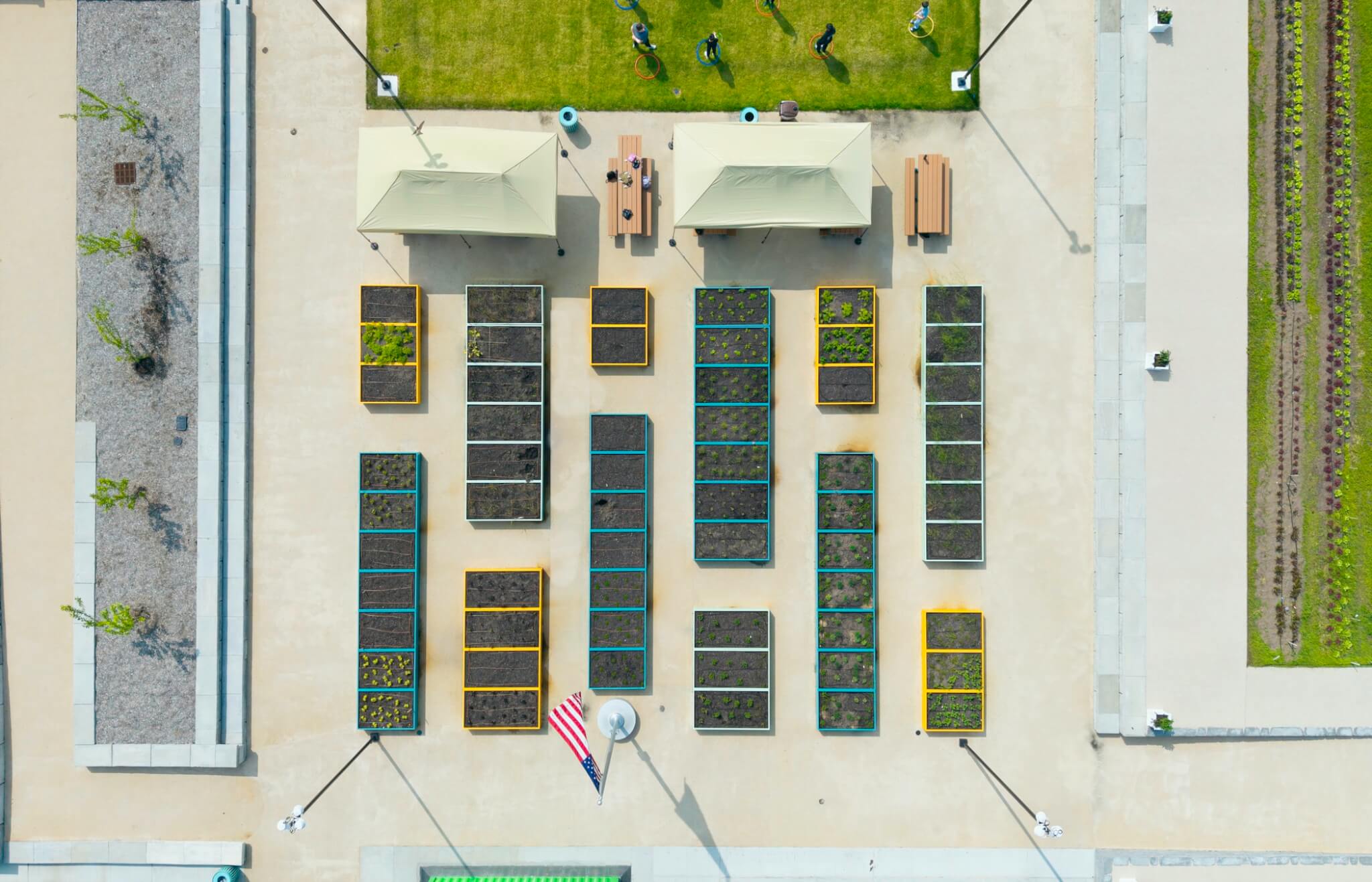In the heart of Bergen Beach, Brooklyn where sun-scorched pavement once stretched empty and bare, bees now buzz through a thriving pollinator garden. Raised beds painted bright blue and yellow brim with rich soil and the first tender shoots of vegetables. Children with dirt caked under their fingernails listen intently to a hands-on lecture about composting and the life cycle of plants. This is the Carol Pino Learning Garden—a former vacant lot reimagined as a hub for environmental education and urban farming, led by the landscape architecture and urban planning firm Grain Collective.
The 1.5-acre outdoor classroom sits next to P.S. 312 and is part of the citywide Grow to Learn initiative, supporting the creation of green schoolyards and outdoor learning spaces throughout New York City. After almost a decade of fundraising and planning the Carol Pino Learning Garden offers hands-on agricultural and ecological education to students from across District 22. By providing students with access to urban agriculture and sustainability education, project leaders hope the Carol Pino Learning Garden will not only enrich academic learning, but also shape long-term attitudes toward environmental responsibility and public health.
“We hope the Learning Garden ultimately prepares the next generation of leaders to take on the controversial topics surrounding food security, agriculture and the environment,” said Runit Chhaya, founding principal of Grain Collective. “As children put together their worldview, their experience in local urban agriculture helps shape it.”
Designed to function as a “living laboratory,” the Carol Pino Learning Garden includes a greenhouse outfitted with hydroponic growing systems, seed-starting areas, lab benches, and a research corner. The surrounding landscape features vegetable plots, pollinator gardens, a citrus grove, and a culturally diverse herb garden meant to reflect the school’s community.
Sustainability was central to the design of the Learning Garden, which was created, in part, to inspire young students to adopt sustainable practices. More than 70 trees were planted, and the garden features solar power, composting facilities, rainwater harvesting, and ADA-compliant hygiene infrastructure. The site also includes a weather station that records temperature, humidity, wind, and rainfall, enabling students to study real-time climate data.

Educational programming is integrated with school curricula, students can study food systems, climate adaptation, and sustainable land use not through books, but rather with their hands. A demonstration kitchen allows students to cook with ingredients grown on-site, reinforcing the full cycle of farm-to-table learning.
The Learning Garden will serve students year-round. Community events such as farmers markets and seasonal festivals are also planned, connecting students and neighbors to local food systems and environmental education.
→ Continue reading at The Architect's Newspaper
